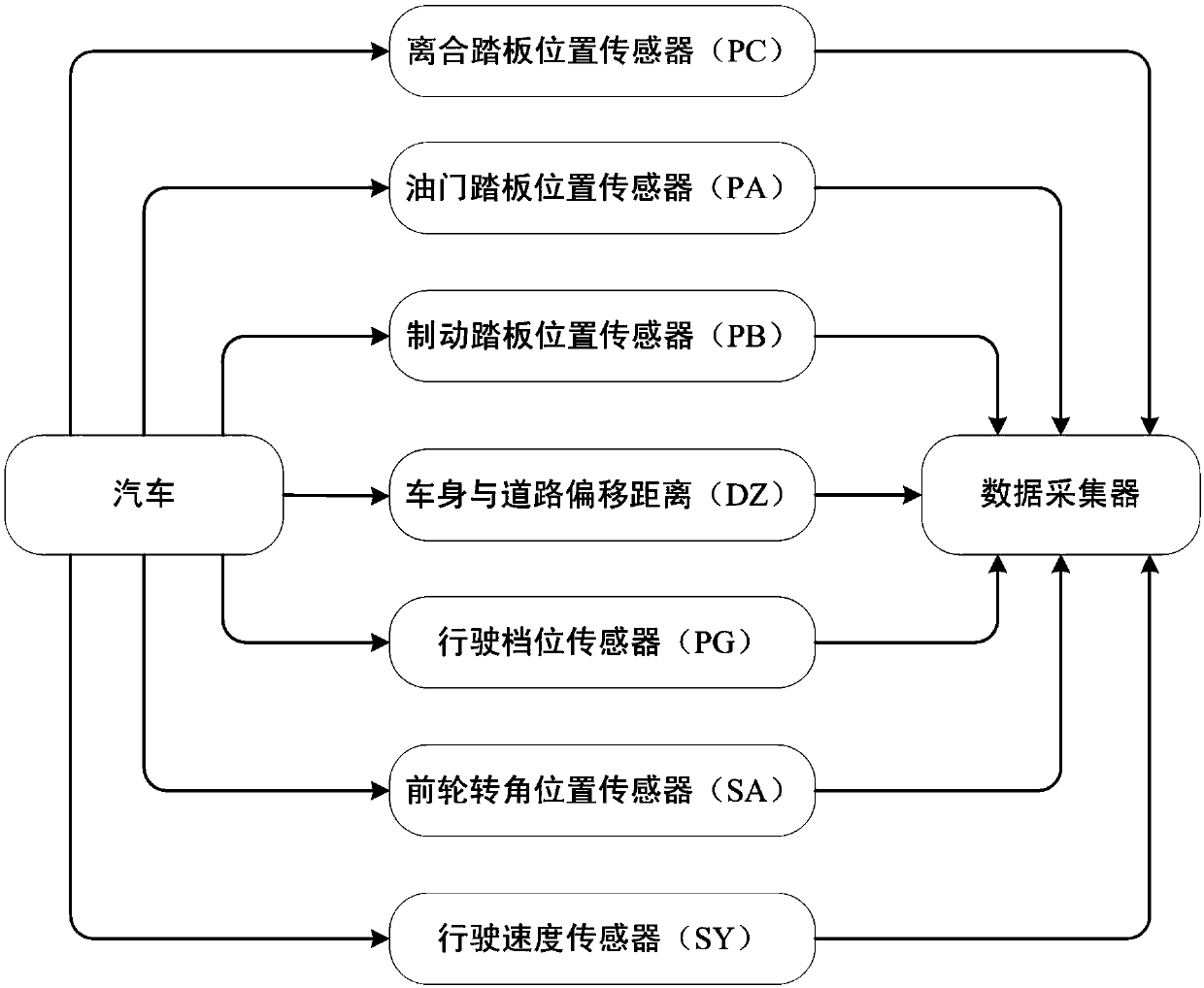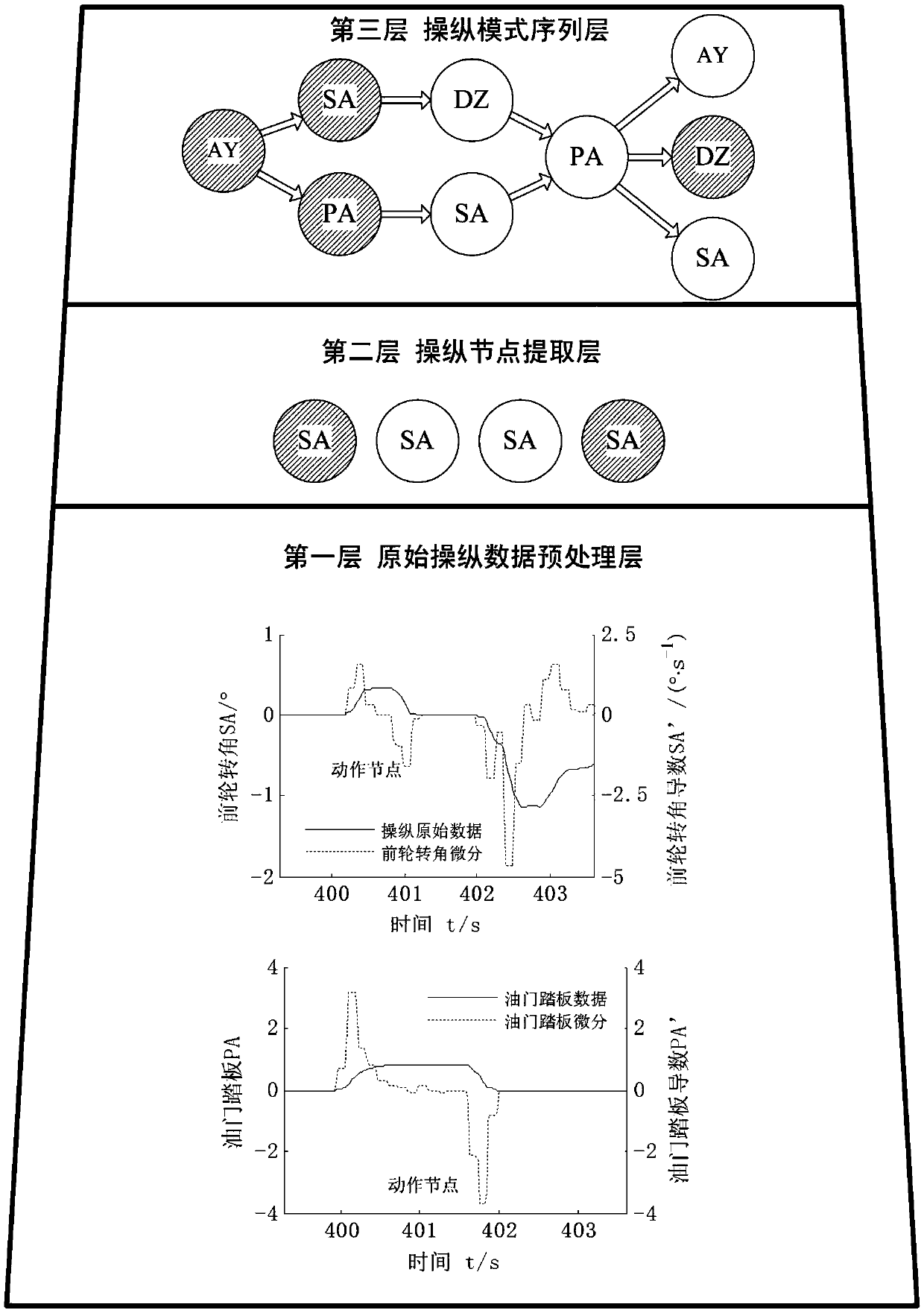Driving Behavior Recognition Method Based on Variant Algorithm of Adaptive Resonance Theory
An adaptive and behavioral technology, applied in the field of driving behavior recognition, can solve the problems of not considering the driver's influence and low recognition rate
- Summary
- Abstract
- Description
- Claims
- Application Information
AI Technical Summary
Problems solved by technology
Method used
Image
Examples
Embodiment Construction
[0064] In this example, if figure 1 As shown, a driving behavior recognition method based on adaptive resonance theory variant algorithm is carried out as follows:
[0065] Step 1. Use the on-board sensors to collect N sets of original manipulation data with a duration of T for the driver's H types of driving behavior, denoted as U H×N ; The driving behavior involved in the specific implementation process includes four types of acceleration (deceleration), steering, merging, and overtaking, that is, H=4; the value of T is the average of the driver's longest time-consuming driving behavior manipulation Duration, the unit is s; thus obtain H×N groups of original manipulation data with a duration of T;
[0066] Step 2. The nth group of raw manipulation data of the collected hth driving behavior carry out preprocessing; Represents the k-th type of manipulation action data in the n-th group of original manipulation data of the h-th type of driving behavior; and has Indicat...
PUM
 Login to View More
Login to View More Abstract
Description
Claims
Application Information
 Login to View More
Login to View More - R&D
- Intellectual Property
- Life Sciences
- Materials
- Tech Scout
- Unparalleled Data Quality
- Higher Quality Content
- 60% Fewer Hallucinations
Browse by: Latest US Patents, China's latest patents, Technical Efficacy Thesaurus, Application Domain, Technology Topic, Popular Technical Reports.
© 2025 PatSnap. All rights reserved.Legal|Privacy policy|Modern Slavery Act Transparency Statement|Sitemap|About US| Contact US: help@patsnap.com



